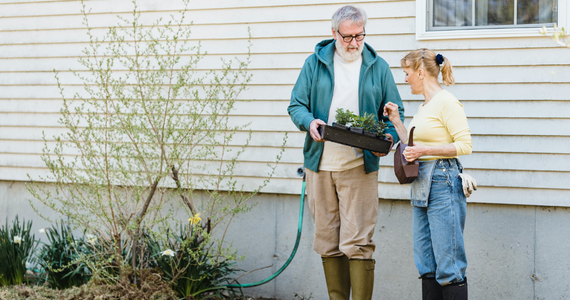Working out how much you need to save for retirement is a question that keeps many pre-retirees awake at night. Recent market volatility and fluctuating superannuation balances have only added to the uncertainty.
So it’s timely that new research shows you may need less than you fear. For most people, it will certainly be less than the figure of $1 million or more that is often bandied around.
For most people, the amount you need to save will depend on how much you wish to spend in retirement to maintain your current standard of living. When Super Consumers Australia (SCA) recently set about designing retirement savings targets they started by looking at what pre-retirees aged 55 to 59 actually spend now.
Retirement savings targets
SCA estimated retirement savings targets for three levels of spending – low, medium and high – for recently retired singles and couples aged 65 to 69.
Significantly, only so-called high spending couples who want to spend at least $75,000 a year would need to save more than $1 million. A couple hoping to spend a medium-level $56,000 a year would need to save $352,000. High spending singles would need $743,000 to cover spending of $51,000 a year, and $258,000 for medium annual spending of $38,000.i
While these savings targets are based on what people actually spend, there is a buffer built in to provide confidence that your savings can weather periods of market volatility and won’t run out before you reach age 90.
They assume you own your home outright and will be eligible for the Age Pension, which is reflected in the relatively low savings targets for all but wealthier retirees.*
Retirement planning rules of thumb
The SCA research is the latest attempt at a retirement planning ‘rule of thumb’. Rules of thumb are popular shortcuts that give a best estimate of what tends to work for most people, based on practical experience and population averages.
These tend to fall into two camps:
-
A target replacement rate for retirement income. This approach assumes most people want to continue the standard of living they are used to, so it takes pre-retirement income as a starting point. A target replacement range of 65-75 per cent of pre-retirement income is generally deemed appropriate for most Australians.ii
-
Budget standards. This approach estimates the cost of a basket of goods and services likely to provide a given standard of living in retirement. The best-known example in Australia is the Association of Superannuation Funds of Australia (ASFA) Retirement Standard which provides ‘modest’ and ‘comfortable’ budget estimates.iii
SCA sits somewhere between the two, offering three levels of spending to ASFA’s two, based on pre-retirement spending rather than a basket of goods. Interestingly, the results are similar with ASFAs ‘comfortable’ budget falling between SCA’s medium and high targets.
ASFA estimates a single retiree will need to save $545,000 to live comfortably on annual income of $46,494 a year, while retired couples will need $640,000 to generate annual income of $65,445. This also assumes you are a homeowner and will be eligible for the Age Pension.
Limitations of shortcuts
The big unknown is how long you will live. If you’re healthy and have good genes, you might expect to live well into your 90s which may require a bigger nest egg. Luckily, it’s never too late to give your super a boost. You could:
-
Salary sacrifice some of your pre-tax income or make a personal super contribution and claim a tax deduction but stay within the annual concessional contributions cap of $27,500.
-
Make an after-tax super contribution of up to the annual limit of $110,000, or up to $330,000 using the bring-forward rule.
-
Downsize your home and put up to $300,000 of the proceeds into your super fund. Thanks to new rules that came into force on July 1, you may be able to add to your super up to age 75 even if you’re no longer working.
While retirement planning rules of thumb are a useful starting point, they are no substitute for a personal plan. If you would like to discuss your retirement income strategy, give us a call.
*Assumptions also include average annual inflation of 2.5% in future, which is the average rate over the past 20 years, and average annual returns net of fees and taxes of 5.6% in retirement phase and 5% in accumulation phase.
i CONSULTATIVE REPORT: Retirement Spending Levels and Savings Targets, Super Consumers Australia,
ii 2020 Retirement Income Review, The Treasury
iii Association of Superannuation Funds of Australia (ASFA) Retirement Standard



